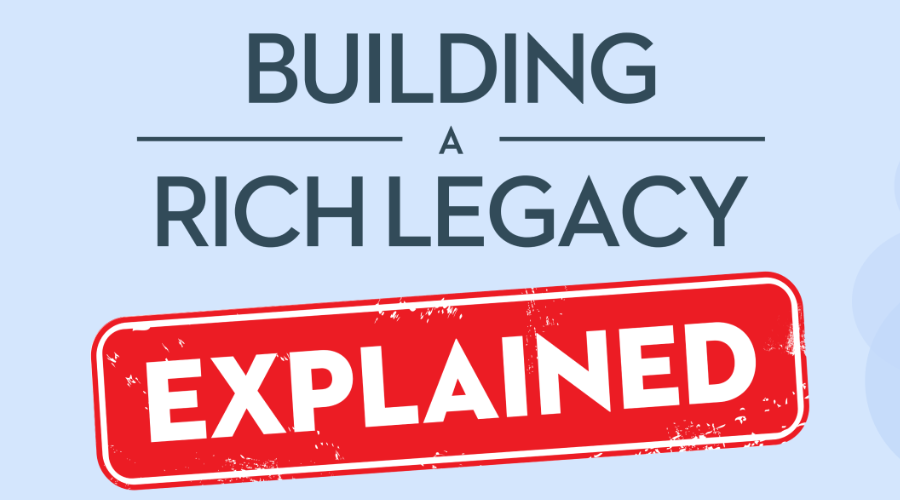When it comes to financing retirement in Canada, the analogy of a three-legged stool is often brought up. Your retirement income is said to come from three sources:
- Personal savings
- Government benefits (i.e. Canada Pension Plan and Old Age Security)
- Employer pensions
However, gone are the days of a well-balanced stool and more often than not – it’s lopsided. In more recent times, contributing to personal savings has become increasingly difficult, with the rising costs of living and the rarity of receiving a meaningful employer pension. The alternative that many resort to for retirement income ends up being the most valuable thing they own: their home.
What is Home Equity?
Your home equity is the value built up in your home – in other words, how much money you’d be able to get if you sold your home, less any outstanding mortgage. As mentioned before, this tends to be the most expensive asset that most people own, and unlike other investments or assets you might have which can fluctuate with the markets, home equity tends to grow over time as your property value increases and as you pay down your mortgage. So, as a homeowner, how can you access this built-up money in your home to financially support your retirement?
7 Ways to Take Equity Out of Your Home
We’ve listed 7 key ways you can get access to the money you’ve built up in your home. It’s important to consider that not all of these approaches may be suited as a way to get retirement income, but more as a source for a retirement emergency expense.
1. Reverse Mortgage
- What is it? A loan secured against the value of your home. It lets you unlock the value in your home without having to sell, move, or pay back the loan right away.
- How can it help in retirement? It can be used for retirement income and emergency expenses. Beneficial if you want to stay in your home but need additional income to cover living costs, healthcare costs, or other retirement needs.
- Pros:
- Allows you to access a lump sum of money without selling or leaving your home – you can stay home, close to your community of family and friends
- No monthly repayments on the loan – it’s deferred until you move, your home is sold, or you pass away
- Cons:
- The loan reduces the equity in your home over time, potentially leaving less for inheritance
- Interest rate tends to be higher than conventional loans (e.g. mortgages)
2. Home Equity Line of Credit (HELOC):
- What is it? Like a credit card, but for your home. It’s a revolving credit that lets you borrow money, pay it back, and borrow again up to a certain amount. You only pay interest on what you use.
- How can it help in retirement? It can be used for retirement emergency expenses or major purchases, however it requires a stable source of retirement income to meet monthly loan repayment and interest. This is not recommended for retirement income as it requires monthly payments.
- Pros:
- Offers flexible access to funds up to a certain limit, where you only pay interest on the amount drawn
- Interest rates are competitive to other types of credit (e.g. credit card)
- Cons:
- Interest rates are variable and change daily – meaning the cost to borrow can be unpredictable and can increase based on market rates
- Requires regular interest payments (typically monthly) that can be a financial burden. Qualifying for a HELOC may be difficult for those with limited income, and if you can’t make the monthly payments you may lose your house
3. Second Mortgage:
- What is it? Second loan on your home, on top of any mortgage you already have.
- How can it help in retirement? It can be used for retirement emergency expenses or major purchases, however it requires a stable source of retirement income to meet monthly loan repayment and interest. This is not recommended for retirement income as it requires monthly payments.
- Pros:
- Can provide a lump sum of cash
- Can offer a fixed interest rate that gives you a predictable repayment plan (however rates are higher than first mortgages)
- Cons:
- Increases your overall mortgage debt that may extend your time in debt
- Requires regular interest payments that can be a financial burden. It may be difficult to pay for those with limited income and may result in losing your house if you are unable to make the monthly payments
4. Downsize:
- What is it? Sell your home and move into a smaller, cheaper house.
- How can it help in retirement? It can be used for retirement income and emergency expenses. It’s beneficial if you’re indifferent to moving out of your existing home
- Pros:
- Can provide a large lump sum of cash
- Can reduce living expenses and maintenance responsibilities
- Cons:
- Emotional and physical costs of leaving your existing home – moving away from your close ones and community
- Hidden moving costs that may eat into home sale cash
5. Sale & Lease Back:
- What is it? Sell your home and rent it back from the new owner.
- How can it help in retirement? It can be used for retirement income and emergency expenses. It’s beneficial if you want to stay in your home but need additional income to cover living costs, healthcare costs, or other retirement needs. However, whether you can stay in your home is dependent on the new owner.
- Pros:
- If there is a suited owner-renter arrangement, it allows you to access a lump sum of money without leaving your home – you can stay home and close to your community of family and friends
- Less responsibility of home maintenance
- Cons:
- Loss of homeownership and added uncertainty if the new owner will let you rent the home as they may have other competing self interests
- Rent costs may increase, which can lead to increased living costs over time and reduce your retirement money
6. Sale & Move to a Rental
- What is it: Sell your home and use the money to move into a rental dwelling.
- How can it help in retirement? It can be used for retirement income and emergency expenses. It’s beneficial if you’re indifferent to moving out of your existing home and value having less home responsibilities
- Pros:
- Can provide a lump sum of cash
- Removes responsibilities (e.g. maintenance, property taxes, insurance)
- Cons:
- Emotional and physical costs of leaving your existing home – moving away from your close ones and community
- Rental costs may increase, which can lead to increased living costs over time and reduce your retirement money
7. Refinance Your Home:
- What is it: Borrowing an additional amount on your existing home mortgage to get cash from your home equity.
- How can it help in retirement? It can be used for retirement emergency expenses or major purchases, however it requires a stable source of retirement income to meet monthly loan repayment and interest. This is not recommended for retirement income, as it requires monthly payments.
- Pros:
- Provides a lump sum of cash
- Refinancing can lower interest rates and monthly mortgage payments, freeing up additional cash for other uses
- Cons:
- May extend overall time that you are in debt
- Requires regular interest payments that can be a financial burden – it may be difficult for those with limited income, and if you can’t make the monthly payments you may lose your house
Navigating Home Equity for Retirement
The traditional three-legged stool of retirement income (personal savings, government benefits, and employer pensions) may no longer be the case for many nearing and in retirement. This is pushing many to look towards their home equity for financial stability in their golden years. The 7 outlined ways to tap into your home equity have its place, depending on your personal circumstances and financial needs. While downsizing might work for some, others may value staying in their beloved homes and maintaining their community connections.
Hopefully, this guide serves as a starting point for how you can begin to think about your home as a way to help you retire better. Carefully consider your options and consult with a financial advisor if you ever need help navigating options for your retirement years.
For many Canadians, the main difficulty when considering how to transition to retirement is being able to finance a comfortable retirement lifestyle. Even with a financial advisor’s help, many people can find that they simply don’t have the necessary finances they need to retire when they want, how they want.
For Canadian homeowners aged 55+, there is a way to boost your retirement income which can help you in fully transitioning to retirement, without having to work. A CHIP Reverse Mortgage from HomeEquity Bank allows you to cash in up to 55% of the value of your home. You can receive this tax-free money either in a lump sum or in regular payments, to allow you to increase your retirement income to a level that allows you to live retirement on your terms.
A key advantage of a reverse mortgage is that you don’t have to make regular mortgage payments. You only pay back what you owe when you move out or sell your home, so your retirement income isn’t negatively impacted.
You can find out how much you qualify for with a CHIP Reverse Mortgage by calling us at 1-866-522-2447 or by using our reverse mortgage calculator.































